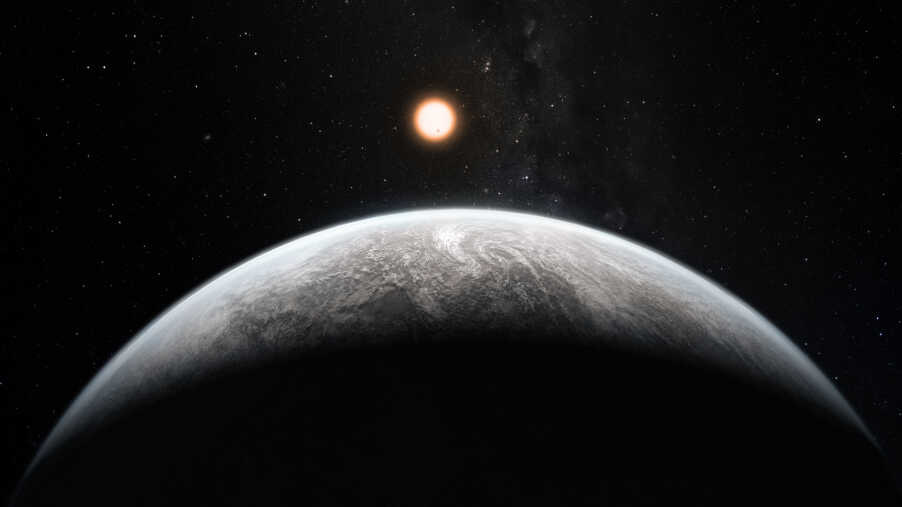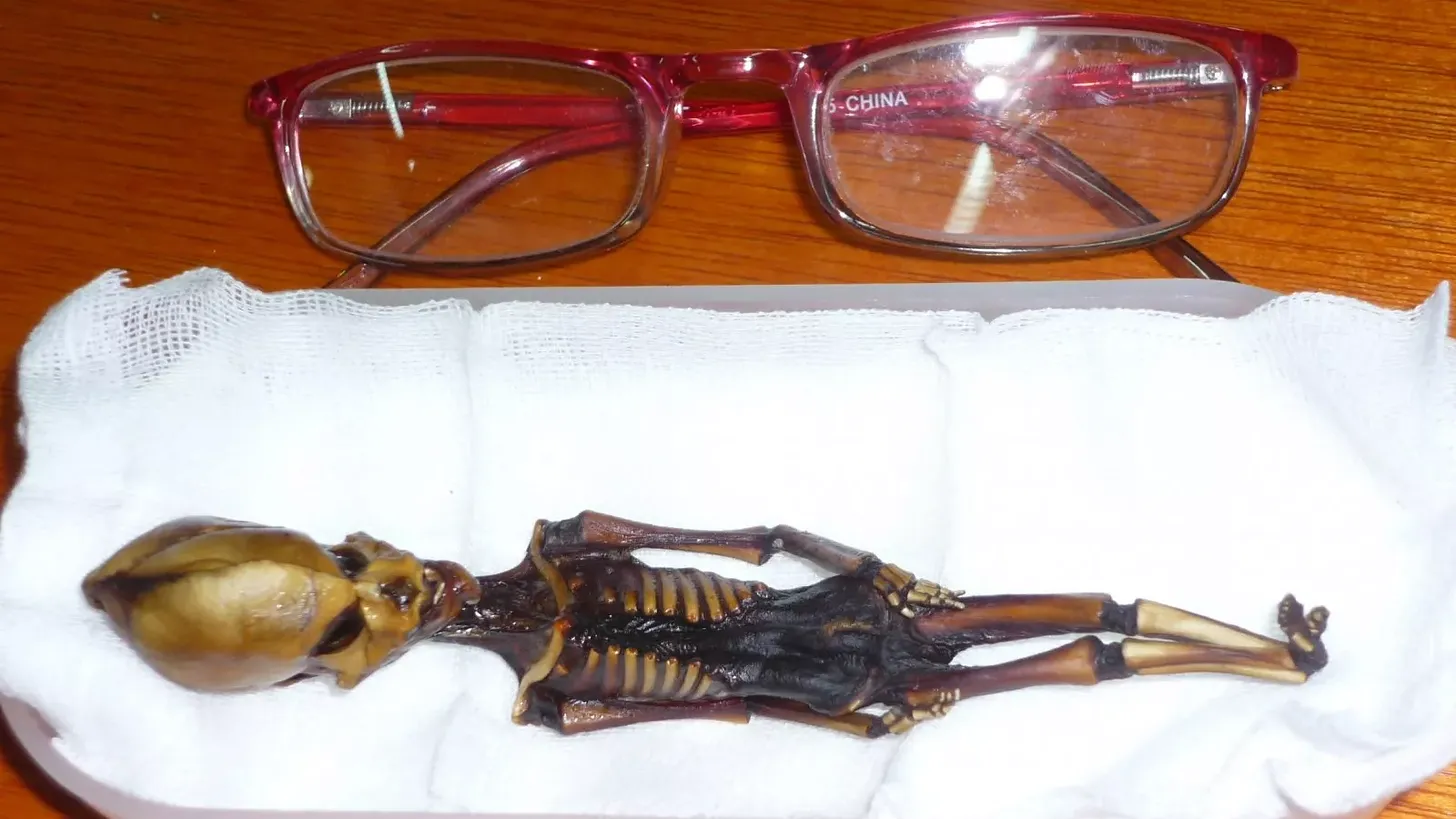The near future of humanity looks precarious, not to say bleak, due to what Schmachtenberger calls the Meta Crisis. The biggest wild card in our future is one that Schmachtenberger and most financial analysts, eschatologists, and even transhumanists never consider: UFOs and the ET presence. Will we be rescued from human folly by non-human beings from “elsewhere” or will they enslave us? There are stories, from Sumer to sci-fi, about cosmic struggles over the fate of our planet. I think there is a message here, albeit one that is blurred beyond recognition.
ETs and UFOs
This is a subject in which I’m intensely interested, but on which I’ve written little because it’s so difficult to know what is true. There is no firm footing. On the one hand, this topic has been the focus of the most intense campaign of misleading propaganda, coming from governments, the military, the blogosphere and the conventional science community.
Violation just by mentioning it — very tightly held info — absurdly closely held subject matter — never seen anything like it in black programs community…they operate without official oversight
— Admiral Thomas Wilson, in a leaked 2002 memo
(You must accept that there is someone trying to mislead us; even if you believe there are no ETs among us, then who is behind the huge number of articles and first-hand testimonials.)
On the other hand, we have no intuition to guide us. If, indeed, we are visited by beings who are governed by social norms and psychological motives thoroughly alien to our own; if, indeed, they have harnessed a science vastly more sophisticated than our own — what can we rely upon to guide our speculation?

Anything that I venture to say about this subject could be 180 degrees wrong. However, I’ve adopted as my wheelhouse areas of science which the community of academic scientists have forsaken or denied or misjudged, and UFOs are the outstanding example. ETs and UFOs have long been accepted as part of our culture’s underground reality, and now the mainstream media are belatedly covering Luis Elizondo and David Grusch. If the scientific community has yet to integrate a new and paradigm-shattering reality, we can hardly fault them.
Fools rush in where wise men fear to tread. I am succumbing to the inherent interest of the topic and its (possible) crucial importance for the human future. It is difficult to know which facts must be explained and which fallacies should be dismissed.
Is there anything that can be said with certainty, or even as a solid scientific hypothesis? I feel pretty confident of two things.
- ETs are much more like humans than we should expect if they evolved independently on a distant planet, in an environment very different from Earth.
- Whatever technology permits UFOs to hover, to turn on a dime, to defy gravity and to travel at great speeds is likely available to some subset of humans on the planet.
I hope to write about #1 today and #2 before the end of the year.
Part I — why are they so much like us?
“They tell you they’ve seen a flying saucer, and they’re all excited. You ask them, what did the pilot look like? And it’s always some quasi-human form, two arms and two legs and a head with big ears, almond eyes and a very small mouth, and what they describes is a lot like what you see in a comic book, not something that would evolve on a world a thousand light years away that has nothing to do with life on Earth. From what I see around me, I think that it is much more likely that the reports of flying saucers are the results of the known irrational characteristics of terrestrial intelligence rather than the unknown rational efforts of extra-terrestrial intelligence.”
— Richard Feynman
Feynman is right, as usual. If life evolved on a distant planet, completely independently from life on Earth, you’d expect it to look and act so different from any earthly life form that we could hardly recognize it. But since Feynman has left us, there have been much more frequent and more credible accounts of encounters with extraterrestrials, most recently the testimony by David Grusch that there are downed spacecraft and alien bodies in possession of the US military, locked away and classified beyond top secret. And all these reports feature ETs who are far too human-like to be credible.

The only acknowledged, documented ET is a 6 inch mummy analyzed by the Stanford University lab of Garry Nolan, which looks just like it’s right out of a comic book. The lab reports that it has 92% DNA homology with humans. If it came from any mammal of terrestrial origin, we’d expect 97+% of the DNA to be like ours, but if it came from a distant planet, we’d expect 0%. How do we make sense of a number like 92%?
In 1991, Dr John Mack, a Harvard psychiatry professor, set out to study the particular brand of schizophrenia that would lead people to claim they were abducted by space aliens. A decade later, he had concluded that these people seem firmly grounded in reality, and the probable reason that they claim to be abducted by space aliens is that they were abducted by space aliens. He wrote two books on the subject.
Convergent Evolution
The eyes of an octopus operate in a fashion much like our own, but they are even better-designed. There’s a lens in front, covered by a cornea. There’s a round eyeball with a retina behind. The octopus’s optic nerve attaches in such a way that it doesn’t create a blind spot. The lens doesn’t deform as ours does to adjust for distance, but instead it slides in and out like the lens on a SLR camera. And the sensors on the octopus retina are sensitive to polarization, in addition to three colors and light intensity that human eyes can see.

Figure credit: Anthony Durston
The punch line is that octopuses diverged from our evolutionary line 500 million years ago. Our last common ancestor with the octopus was a primitive, worm-like creature that had no eye at all. So the octopus eye and the human eye evolved completely independently, despite their very similar design.
That ET anatomy and even biochemistry is so much like our own is startlingly unexpected. Something will have to shift in our basic understanding of how the world works. There are no “conservative” responses to this challenge, so we must take our pick among a number of radical hypotheses.
When you have eliminated the impossible, whatever remains, however improbable, must be the truth. — Sherlock Holmes
But in this case, it is not easy to distinguish “impossible” from “highly improbable”. My favored interpretation, for which I think there is other support, is that the possibility of life is written into the laws of physics. Not just “life” as a general phenomenon of self-organization, homeostasis, and reproduction, but our particular mode of life based on the chemistry of nucleic acids and proteins — this may be the only kind of life that is possible, and it is made possible by very particular values of fundamental laws of physics.
“The brain is small. The universe is large. In what way, if any, is it, the observed, affected by man, the observer? Is the universe deprived of all meaningful existence in the absence of mind? Is it governed in its structure by the requirement that it gives birth to life and consciousness? Or is man merely an unimportant speck of dust in a remote corner of space? In brief, are life and mind irrelevant to the structure of the universe – or are they central to it?” — John Wheeler
The quote is from The Universe as Home for Man, by John Wheeler (1911-2008), sage of the Princeton University physics department. In this 1974 essay, he proposes a reversal of the Copernican revolution. Starting with Copernicus, the earth-centered and human-centered view of the universe was broadened outward, until the earth became one planet among a trillion trillion, and human life was an insignificant, opportunistic feature of a vast mechanical system.
“The more the universe seems comprehensible, the more it also seems pointless.”
— Steven Weinberg, Nobel laureate in quantum physics
In Wheeler’s proposed Copernican reversal, conscious life is the reason for the existence of this particular universe. Fifty years ago, Wheeler wrote about the coincidence of physical constants being just right for life, but he was unaware of the further extraordinary finding that (perhaps) life evolved far from earth is very similar to life on earth, suggesting that there is only one kind of life that is supportable by our particular physical laws.
“The more I examine the universe and the details of its architecture, the more evidence I find that the universe in some sense must have known we were coming.”
— Freeman Dyson (another brilliant and creative quantum physicist)

One more — Paul Davies has written whole books bridging between cosmology and philosophy.
Scientists are slowly waking up to an inconvenient truth – the universe looks suspiciously like a fix. The issue concerns the very laws of nature themselves. For 40 years, physicists and cosmologists have been quietly collecting examples of all too convenient “coincidences” and special features in the underlying laws of the universe that seem to be necessary in order for life, and hence conscious beings, to exist. Change any one of them and the consequences would be lethal. Fred Hoyle, the distinguished cosmologist, once said it was as if “a super- intellect has monkeyed with physics”. — Paul Davies
Life is based on 4 kinds of molecules
Even the idea of a chemical bond depends on extreme coincidences in the values of physical constants that balance just right to create different chemical elements with complementary properties. The existence of covalent bonds of carbon, all interchangeable because their energies are similar within a narrow range, makes possible the macromolecules of organic chemistry, and this is a further stretch.
The four kinds of biomolecules are
- Nucleic acids (DNA and RNA)
- Amino acids (proteins are the workhorse molecules and also the signal molecules)
- Lipids (fatty acids self-organize to make membranes and cell walls)
- Carbohydrates (Sugars and starches can be complex and functional. In plants, celluloses are carbohydrates that provide structural rigidity and resistance to decay.)
Proteins and DNA molecules fold in characteristic ways that define their function and symbolic meaning. The folds are held together by hydrogen bonds — an affinity for adjacent pieces of a molecule that is individually weaker than a chemical bond, but in large macromolecules, a great number of these weak quasi-bonds can give a reliable integrity to a folded structure. The kinds of lock-and-key mechanisms by which enzymes bind to one another are also accomplished via hydrogen bonds.
All this chemistry requires a remarkable fine-tuning of the properties of certain atoms that is probably unique. Life is based on unique properties of C, H, N, and O in particular, and plausibly, the four kinds of molecules listed above would be obligate constituents of life evolved anywhere.
A separate set of coincidences makes these four atoms (C, H, N and O) common products in stellar nuclear explosions. Beryllium, Boron, and Lithium are similar light elements, but their nuclei are much less stable, so they are rare. And, coincidentally or otherwise, they are much less useful for making macromolecules.
So maybe we should not be surprised if life evolved on distant planets in other realms of the universe is based on a common chemistry of DNA, proteins, lipids, and carbohydrates.
What, then, of the genetic code? According to conventional biology, the genetic code is an arbitrary mapping between triplets of nucleic acid bases (A,T,C, and G) and one of twenty amino acids. In order for an alien to be genetically compatible with any life on earth, it would have to share the same genetic code, and the chances of this happening by chance would be — (actually, that’s an interesting combinatorial problem) — the answer is somewhere south of 1 chance in 10^100 = 1 googol.
And it is remarkable and demands explanation that ETs are bipeds walking upright with two eyes, two ears, a nose, and a mouth that form a recognizable face. We have the example of octopuses for a very different body plan that functions at least as well as the primate body plan for locomotion and manipulation of the environment.
We should expect that ETs are at least as different from us as octopuses or crows or elephants. If an ET were the size of the Atacama mummy, there is no reason it couldn’t have wings in addition to arms and legs. On a planet with a denser atmosphere, even animals our size could be evolved to fly.
There are stories of little Greys, Nordics and even Reptilians. All are humanoid in shape.
The (probable) fact that they are so much like us in appearance and biochemistry is a salient data point, a starting point for deductions.
- Maybe life on earth was seeded billions of years ago and evolution has been managed by ETs all along.
- Maybe ETs are our descendants from the distant future, time traveling back to the present.
- Maybe there are Platonic ideals or universal forms or a collective unconscious that have a kind of life of their own, independent of physical existence, and evolution is guided by some properties of a universal consciousness.
- Maybe mind creates physical reality, and our collective thoughts are creating our physical universe, galaxies and all, and our thoughts are also creating the anomalies in our world like flying saucers and Grey aliens. Jacques Vallee speculated that leprechauns and sprites and genies are all projections of the consciousness of their era, and that ETs are the version of this phenomenon that fit best with the present zeitgeist.
- A variant on this are reports by people in séances that disembodied spirits can take human form, can say things and do things in physical reality with bodies that are real but ephemeral. (Read Leslie Kean.) Is this what ETs are? Are all on a spectrum of various levels of reality.
- The human race divided tens of thousands of years ago, and some went to live underground with advanced technologies, and they have interacted only sparsely with us above-ground dwellers. They are the Morlocks of H G Wells. They have advanced technology, both mechanical and psychic, and they are wondering how to keep us under their control now that our numbers are so large.
- There are stranger proposals with alternate realities, branched time lines, multiple dimensions. I don’t exclude these possibilities but they are so far outside my training and my experience that I don’t know how to think about them.
All of these seem far-fetched — but that’s the point. “When you have eliminated the impossible…” The fact that ETs look so much like us and that their biochemistry is compatible with ours is such an unexpected finding it provides a powerful clue about something basic, with implications for the greatest mysteries about who we are and where we come from.
This year’s Defense Authorization bill contains language (nominally) compelling our military and intelligence agencies to reveal to Congress what they know about UFOs and reverse-engineered technology.
We’ll see.
